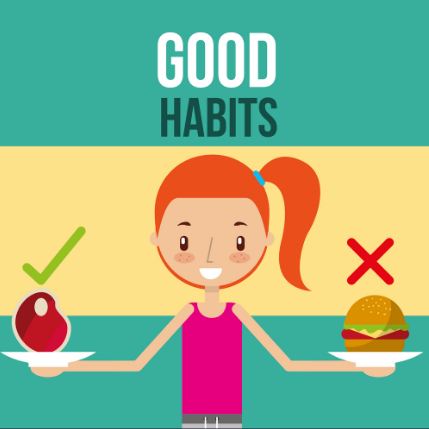
A living healthy lifestyle is important for the longevity and quality of your life. Positive habits and better health will lead to a reduced risk of chronic diseases. Healthy weight can be maintained by a balanced diet, regular exercise, proper nutrition, and regular exercise. Many resources are available to help improve your overall health. Your body's health will make it easier to be happy and more productive.
Living healthy emphasizes the power of food as medicine. High-quality, high-nutrition foods are emphasized in the program to help you maintain a healthy lifestyle. This program is different from conventional treatments. It will address your whole person and address any external factors that could contribute to disease. Focusing on these areas can help you improve your overall health and decrease the risk of developing chronic disease.

A healthy lifestyle starts with small changes, such as taking more steps each day, adding fruit to your breakfast, and drinking more water. It can start with something as simple as not eating the second helping of potatoes. But it's best to start small and build your way up to a healthier lifestyle. Even if you don't feel motivated to change your routine, you can still improve your daily life by adopting new healthy habits. It's better to start slowly, because it will pay off over the long term.
Healthy lifestyles are important for your body and mind's long-term well-being. Research shows that healthy living habits can reduce the likelihood of developing certain diseases such as heart disease, diabetes, and obesity. A healthy lifestyle can also help improve family relationships. People who live a healthy lifestyle also tend to live longer. Healthy lifestyles have many benefits. You will feel happier, healthier, more energetic. You will be able fit comfortably into your favorite jeans, without feeling unfit.
The most effective way to live healthy is to eat more fruits and vegetables. The World Health Organization defines healthy eating as eating more fruits, vegetables, and less meat than those who do not. The World Health Organization further defines lifestyle as a combination or values, attitudes, and environments. Being healthy is all about making good choices. For a balanced life, a balanced lifestyle is essential. You must eat enough vegetables every day to achieve this.

Living a healthy lifestyle means eating foods and activities that promote brain growth. This will allow you to stay fit and lower your chance of developing diabetes. You'll also be more comfortable sleeping. Living a healthy lifestyle will help you enjoy your life. Healthy lifestyles will help you lose weight, increase your energy, and live longer. But emotional health is equally important. High stress levels can lead to increased likelihood of smoking, drinking alcohol, and arguing with others. It is important to practice yoga, meditation, and physical fitness.
FAQ
What is the best food for me?
The best diet for you depends on several factors, like your age, gender, weight, health conditions, and lifestyle habits. You should also consider how much energy your exercise consumes, whether you like low-calorie or high-calorie foods, and what you enjoy in terms of eating fruits and veggies.
Intermittent fasting is a good option if you're trying to lose weight. Intermittent fasting involves consuming only specific meals throughout the day, rather than having three large meals. This method may work better than traditional diets which include daily calorie counts.
Studies have shown that intermittent fasting can improve insulin sensitivity and decrease inflammation. This could lead to improved blood sugar levels, and a lower risk of developing diabetes. Some research also suggests that intermittent fasting might promote fat loss, and improve overall body composition.
What is the difference between sugar and fat?
Fat is an energy source that comes from food. Sugar is a sweet, naturally occurring substance in fruits and vegetables. Both fats (and sugars) have the same calories. Fats however, have more calories than sugars.
Fats are stored in the body and contribute to obesity. They cause cholesterol buildup which can lead to strokes and heart attacks.
Sugars can be quickly absorbed by your body and give you instant energy. This causes blood glucose levels to rise. High blood glucose levels can be dangerous because it increases the risk of developing type II diabetes.
What are the 10 best foods to eat?
The 10 best foods to eat include:
-
Avocados
-
Berries
-
Broccoli
-
Cauliflower
-
Eggs
-
Fish
-
Grains
-
Nuts
-
Oats
-
Salmon
How can my blood pressure be controlled?
The first thing you need to do is find out what causes high blood pressure. Next, you must determine the cause and take steps to decrease it. You can do this by eating less salt, losing weight, or taking medication.
Make sure you're getting enough exercise. Walking is a great alternative if you don't have the time or energy to exercise regularly.
Consider joining a gym if your current exercise regimen is not satisfying you. A gym that has other members who are motivated by your goals will be a good choice. It's easier for you to exercise if you know that someone will be watching you at the club.
Why is it important to live a healthy life?
A healthy lifestyle will help us live longer and happier lives. Regular exercise, healthy eating habits, healthy sleep habits and stress management can all help prevent strokes, heart disease, diabetes, and cancer.
A healthy lifestyle helps us cope better when we are faced with everyday stresses. A healthy lifestyle can also help you feel and look younger.
Statistics
- This article received 11 testimonials and 86% of readers who voted found it helpful, earning it our reader-approved status. (wikihow.com)
- In both adults and children, the intake of free sugars should be reduced to less than 10% of total energy intake. (who.int)
- WHO recommends reducing saturated fats to less than 10% of total energy intake; reducing trans-fats to less than 1% of total energy intake; and replacing both saturated fats and trans-fats to unsaturated fats. (who.int)
- nutrients.[17]X Research sourceWhole grains to try include: 100% whole wheat pasta and bread, brown rice, whole grain oats, farro, millet, quinoa, and barley. (wikihow.com)
External Links
How To
What does the term "vitamins" mean?
Vitamins can be described as organic compounds found in food. Vitamins are essential for our bodies to absorb nutrients from the foods we eat. Vitamins cannot come from the body so food must provide them.
Two types of vitamins exist: water-soluble vitamin and fat-soluble vitamin. Water-soluble vitamins dissolve in water easily. You can find vitamin C,B1 or thiamine, B2 or riboflavin and B3 or niacin, B3/niacin, B6/pyridoxine, folic Acid, biotin and pantothenic Acid as examples. The liver and fatty tissues are home to fat-soluble vitamins. You can find vitamin D, E K, A, beta carotene, and other fat-soluble vitamins.
Vitamins are classified according their biological activity. There are eight main groups of vitamins.
-
A - Essential for healthy growth and health maintenance.
-
C – essential for proper nerve function.
-
D - Essential for healthy teeth and bones.
-
E - needed for good vision and reproduction.
-
K - required for healthy muscles and nerves.
-
P - essential for strong bones, teeth and tendons
-
Q – aids digestion of iron and iron absorption
-
R - necessary for making red blood cells.
The recommended daily allowance (RDA) of vitamins varies depending on age, gender, and physical condition. The U.S. Food and Drug Administration has established the RDA values.
For example, the RDA for vitamin A is 400 micrograms per dayfor adults 19 years or older. For fetal development, pregnant women need 600 mg per day. Children ages 1-8 require 900 micrograms per day. Infants below one year old require 700mg per day. But, between 9 months to 12 months, the amount drops to 500mg per day.
Children ages 1-18years who are obese need 800 micrograms per day while those who are overweight need 1000 micrograms per day and children who are underweight need 1200 micrograms per day to meet their nutritional needs.
Children aged 4-8 years old who have been diagnosed as having anemia require 2200 micrograms of vitamin C per day.
2000 micrograms is the minimum daily intake for adults over 50 years old to maintain good health. Women who are pregnant or breastfeeding need 3000 micrograms per day due to increased nutrient requirements.
Adults over 70 need 1500 micrograms daily, as they lose 10% of their muscle every ten years.
Women who have been pregnant or are lactating require more than the RDA. Pregnant women need 4000 micrograms per dayduring pregnancy and 2500 micrograms per day after delivery. Breastfeeding mothers need 5000 mg per day when breastmilk is being produced.